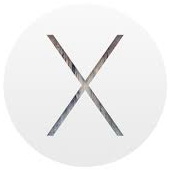Changes:
- An External recording control option has been added to the HDMI item in the SETUP MENU. If the camera is connected via HDMI to a third-party recorder that supports the Atomos Open Protocol (the Atomos SHOGUN, NINJA2, or NINJA BLADE), selecting On allows camera controls to be used to start and stop recording. More information is available in a supplementary manual.
- Note: Choose an option other than 576p (progressive) or 480p (progressive) for HDMI > Output resolution in the SETUP MENU.
Fixed the following issues:
- Incorrect distances were shown in the camera playback info display for photographs taken with an optional flash unit in distance-priority manual (GN) mode.
- The brightness of the live view photography display would not change when a command dial was rotated to adjust exposure compensation with On (Auto reset) selected for b Metering/exposure > b4 Easy exposure compensation > Easy exposure compensation in the CUSTOM SETTING MENU.
- Although the preview button would stop the lens down to maximum aperture when assigned the Preview role, the maximum aperture indicator would not appear in the monitor.
- In rare cases, the shutter would not be released when the user attempted to take photographs in movie live view.
- About 4 seconds of static could be heard on audio recorded with external HDMI recorders during movie live view.
- The shutter speed, aperture, and ISO sensitivity displayed in the monitor during movie live view would differ from values in the final movie file.
- Volume could sometimes not be adjusted if movies were played with indicators hidden during full-frame playback (None (image only)).
- Exposure compensation would fail to produce the desired results if a negative value was selected when NEF (RAW) images were processed using the NEF (RAW) processing option in the RETOUCH MENU.
- Images would in rare cases fail to record correctly with HDR (high dynamic range) selected in the SHOOTING MENU.
- If On was selected for Exposure smoothing during interval timer photography, every frame after the first would be overexposed.
- File numbers were not assigned in the proper sequence.
- In some languages, characters or parts of characters would be missing from the SETUP MENU > Location data > Position display.
- In some languages, characters or parts of characters would be missing from the SETUP MENU > AF fine-tune > List saved values display.
- Some help text has been changed.
How to verify your camera’s current firmware version:
- Turn on the camera.
- Press the MENU button to display the menu screen.
- Press the rotary multi selector to the left to highlight the menu tab, select the setup tab, and press the OK button.
- Highlight Firmware version from the setup menu and press the OK button.
- The camera's firmware version will be displayed.
- Turn off the camera.
Quick Install Guide:
- Power the camera from AC adapter unit or use a fully charged battery.
- Create a new folder with an appropriate name on your computer's hard drive.
- Download the file from the available links.
- Run the downloaded file to create a folder which contains the firmware folder.
- Use a card reader or similar device to copy the firmware folder to the root directory of a memory card formatted in the camera.
- Backup any data saved to the camera’s internal memory.
- Insert the memory card into the camera's memory card slot and turn on the camera.
- Select Firmware version from the camera's setup menu and follow instructions displayed to upgrade the firmware.
- After the update is complete, turn off the camera and remove the memory card.
- Access the Firmware version item in the camera's setup menu to confirm that the firmware has been upgraded.
- Format the camera’s internal memory by selecting Format memory from the setup menu, and then turn off the camera.
About Digital Camera Updates:
Updating to a newer firmware version than the one already installed on your camera can improve the device’s overall performance and stability, resolve various issues, and add support for newly developed features or enhance existing ones.
On the other hand, downgrading the camera’s firmware can recover its functionality in the unlikely event the currently installed version is faulty or the device’s performance dropped after an upgrade. However, bear in mind that applying an earlier build might not always be possible.
It is recommended that changing the camera’s firmware be performed when the new release resolves an issue that your device has been encountering, or adds a new feature (or enhances an existing one) that could prove useful for you.
This process isn’t intended to be destructive, but still, it’s best to save all your personal data and configurations before applying a different firmware. Moreover, make sure that the battery is fully charged and don’t use the camera’s buttons while the installation is in progress.
When it comes to the update method, usually, you must copy the firmware file onto a compatible memory card, insert it into the camera, and browse from the menu to the device’s update section.
However, each device has various ways to enter the update mode and particular steps that should be taken for a successful upgrade, therefore make sure you read the product’s installation guide.
That being said, if you consider that this firmware improves your device in any way, then hit the download button and get the desired version; if not, check with our website as often as possible so that you don’t miss the update that will boost your camera’s performance.

Comments not found